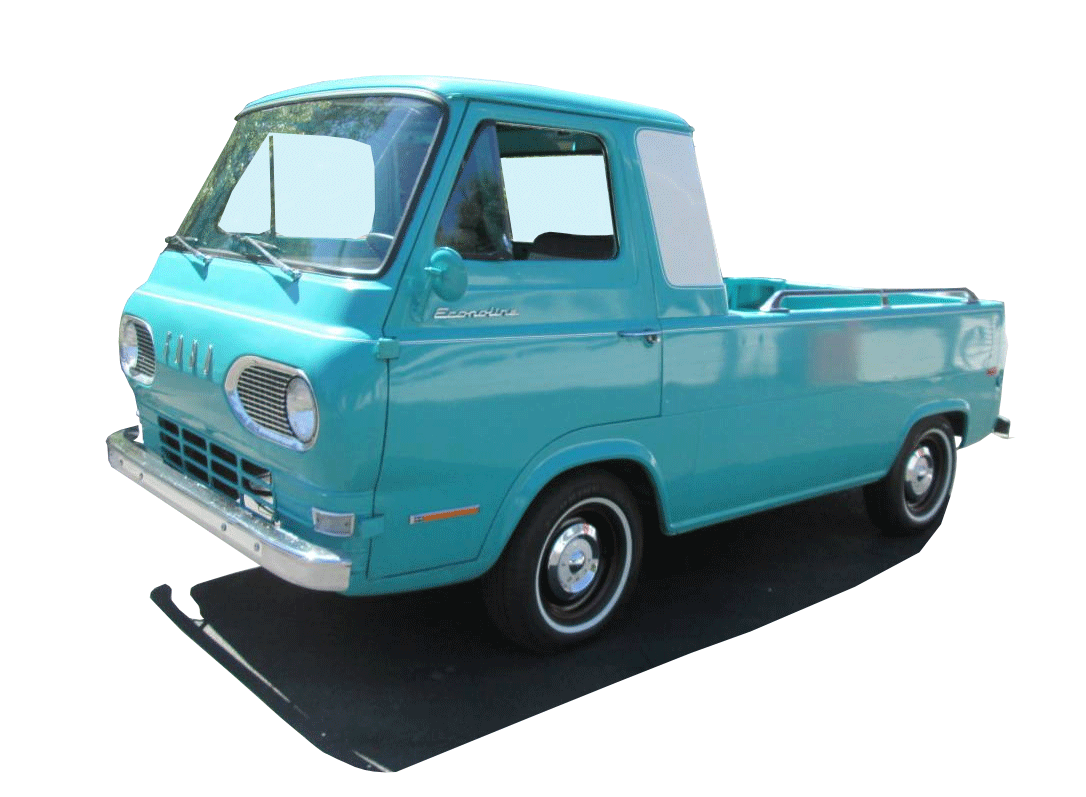A design that strived to be both compact and yet provide ample cargo space
Introduced in the fall of 1960 as a 1961 model, the Econoline was unlike any truck previously offered by Ford. Mechanically based on Ford’s compact Falcon line, the flat nosed Econoline was a light duty work truck that featured unibody construction and an engine located between and behind the seats of a “mini cab-over” design.
As the name implied, the Econoline, combining a lightweight design with a gas saving 6-cylinder engine, was an economical vehicle to operate. A 144 CID 6-cylinder engine was standard in the early models, graduating to 170 CID and 240 CID six-cylinders in later production years. A three-speed manual transmission was also standard for the early years of production, with an automatic transmission eventually added as an option.
With a design that strived to be both compact and yet provide ample cargo space, the Econoline had some inherent weaknesses. Handling was an issue as the combination of the cab-over design and engine location created a disproportionate balance of weight over the front of the vehicle. To compensate for this uneven balance, Ford fit a 165 lb weight over the rear wheels, but it did little to improve handling or the lack of traction to the rear tires. Despite its design flaws, the first generation Econoline would remain virtually unchanged from its introduction through 1967.
The 1961 Econoline was offered in three body styles, Pickup, Delivery Van, and Station Bus. For 1962, Ford reclassified the Station Bus was as a passenger car and offered it as part of the Falcon line. The Econoline Pickup and Delivery Van continued to be offered.
By 1963, the Econoline Pickup increased its rated payload capacity and offered an optional custom cab. The 1963 Econoline Van added standard dual outside rearview mirrors, heavier roof rails, as well as an optional 8-door version of the van. The Station Bus continued in the Falcon line.
For 1964, a new model, the Panel Van, joined the Econoline family. The new addition was basically a standard van without the side cargo doors. The 1964 Econoline Pickup offered an optional heavy-duty package, as well as an upgraded cab interior with color-keyed seat trim, cab headliner, and locking glove box door. The 1964 Van offered a heavy-duty package and left hand cargo doors as options.
In 1965, the Econoline series was again expanded to include the Supervan, which featured an 18-inch body extension. The 1965 Van sported stronger, more massive bumpers, a lower, more comfortable driver's seat, an integral package tray, and a more efficient heater. The rear of the 1965 Econoline Van, Station Bus, and Club Wagon were quickly distinguished from previous models by their rear cargo door-mounted license plate bracket and lamp.
In 1966, the Econoline-based family of Club Wagons was broadened, and the interior trim scheme was improved. 1967 would be the final year of production for the first generation Econoline. New features for the year included a dual brake master cylinder, padded sun visors, 2 speed wipers, and back-up lamps.







